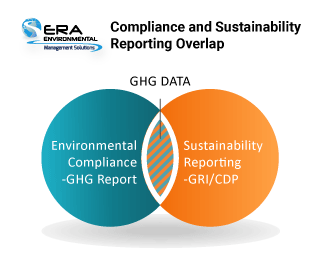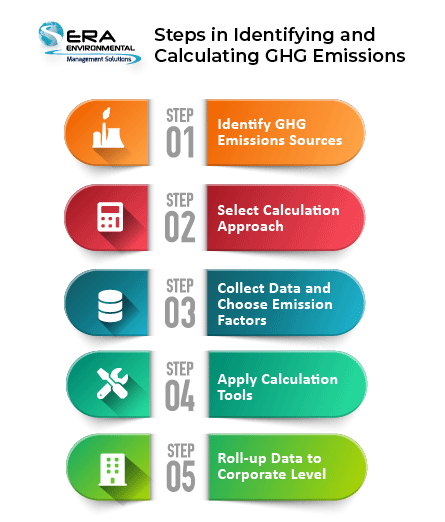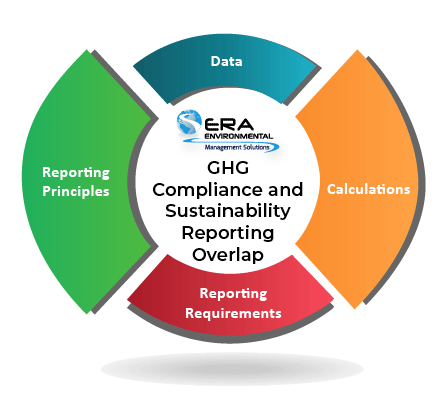More and more organizations are choosing to do sustainability reporting to improve their market branding and image while using this to match and exceed their competitors’ reporting efforts. According to KPMG, 80% of companies worldwide now report on sustainability, increasing the need for more efficient reporting methods.
This increase in sustainability reporting is causing companies to search for ways to simplify their Greenhouse Gas (GHG) emissions reporting, one of the most crucial sustainability indicators. GHG accounting is subject to EPA enforcement and voluntary sustainability reporting, doubling GHG reporting responsibility. Imagine tackling these reports simultaneously and saving the time it would have taken to collect data for each of them separately.
The line between GHG compliance reporting and sustainability reporting is completely blurred when it comes to several factors such as data collection and tracking methods, calculation methods, and reporting requirements. Before expanding on how these factors overlap for GHG compliance and sustainability GHG reporting, it is essential to describe both types of reports separately to give a clear picture of individual report requirements and overlap.

GHG Compliance Reporting
Is GHG Reporting Mandatory?
GHG reporting has been mandatory in the United States since 2009. Companies must report emissions through the Greenhouse Gas Reporting Program (GHGRP, 40 CFR Part 98). For reporting year(RY) 2020, more than 8000 facilities reported to the GHGRP. This program covers a total of 41 categories, including fuel and industrial gas suppliers, manufacturing industries, industrial landfills, and many more.
You are required to report under 40 CFR part 98 if:
- GHG emissions from your defined sources exceed 25,000 metric tons of CO2e per year.
- The release, combustion, or oxidization of products amounts to more than 25,000 metric tons of CO2e emissions.
- Your facility receives 25,000 metric tons or more of CO2 for underground injection.
How Do I Complete My GHGRP Report?
GHG compliance reporting involves specific data collection, including data on all your emission sources and the amount of emissions from each source in the standard defined metric (CO2e). For example, the electronics manufacturing industry must provide annual manufacturing capacity, GHG consumed and produced for each process type, and many other factors. You must collect all this data for the defined reporting year, and the EPA provides calculation methods for the final values to enter in your report.
The calculation method you choose should be specific to your facility's existing environmental monitoring systems.
When calculating emissions from fuel combustion, you can use information from a continuous emission monitoring system (CEMS), a mass balance approach, or default emission factors. Using fuel composition data is also a good way of estimating emissions. This requires information on the high heating value (HHV), carbon content, and molecular weight multiplying these parameters by the amount of consumed fuel. Many available emission factors correspond to industry and process type. Facilities that use these default emission factors can produce an accurate emissions estimate.
Facilities reporting process emissions can use the above-mentioned methods but should be mindful of their specific processes. For example, cement production has fewer stacks than processes with fugitive leaks, such as natural gas distribution.
After collecting the information on all these emissions, ensure that you check the EPA checklist provided for your specific industry. Following this step, you are ready to submit your report using the GHG reporting tool e-GGRT.
Sustainability Reporting
GHG emissions are a critical sustainability indicator that should be carefully accounted for and tracked. Sustainability differs from compliance reporting in that no emission threshold is required, and every company can define its own goals with the freedom to use varying reporting frameworks. It may not be mandatory, but it is still vital for maintaining transparency for your organization. To explore the reporting requirements, you need to investigate the principles that govern sustainability GHG reporting according to the GHG protocol.
Use the following principles to guide your sustainability GHG reporting:
- Relevance. Your GHG report should contain helpful information for company advancement. You can achieve this by selecting an appropriate inventory boundary for your reporting which suits your company style and business connections.
- Completeness. Your company should account for your emissions completely by accurately quantifying all emissions and estimations, no matter how minimal.
- Consistency. It would be best to use consistent calculation methodologies to ensure comparability across long periods. This will help your company measure progress directly without adjusting for varying data collection methods.
- Transparency. You should disclose your information in its entirety; methodologies, emission factors, changes in calculation methodology, and emission sources should all be included in your report. The information should be comprehensive enough to be replicated by a third party.
- Accuracy. The data should be quantified accurately. GHG emissions, estimates, and calculations should reflect the actual emission values as closely as possible.
After familiarizing yourself with these principles, you are ready to conduct your GHG accounting, and this knowledge will aid in your data collection process and meeting reporting requirements.
How Do I Report my GHG for Sustainability?
You can use various frameworks for GHG reporting. Still, whether you are using this for your annual company sustainability GHG report, GRI, or CDP, the process of GHG reporting for sustainability frameworks (shown in the diagram below) is like that of compliance reporting.

To determine the data required, you must identify emissions sources from Scope 1 (direct emission sources), Scope 2 (indirect emissions from purchased electricity), and Scope 3 (sources from upstream and downstream activities). This includes mapping out company and facility processes and materials and using collected data in your defined calculation methods.
Companies can use personal GHG calculation methods or the methods provided by the GHG protocol if they yield an accurate emissions value. The GHG calculation tools have various methods for different emissions sources according to available company data.
After all the emissions calculations, the data should be presented thoroughly. If we take an example from the GHG protocol standard, this means providing:
- A description of emission sources.
- Justification for including or excluding certain sources.
- Comparative information from previous years and trends in the data.
- The reporting period covered.
- Description of GHG calculation methods and their modifications.
- Information that impacted the report in any way.
The data collection process can be enhanced by relying on a sustainability reporting software solution.
How does Compliance and Sustainability GHG Reporting Overlap?
Now that the factors of GHG environmental reporting and sustainability reporting have been discussed separately, the overlap between the two reporting requirements and processes is evident. This can help you identify ways your company can use these similarities to boost your reporting processes. Below is a summary of the similarities in compliance and sustainability GHG reporting.

The Data
Compliance reporting and sustainability GHG reporting require similar types of data. For example, energy consumption and the fuel used in your organization should be reported. Instead of collecting this data separately in separate spreadsheets using varying calculations, you can collect the data in one go and use it for both purposes.
The Calculations
The calculation methodologies are also similar when using CEMS, mass balance approaches, or defined emission factors. The use of Carbon Dioxide Equivalent (CO2e) to account for the different global warming potentials of the GHGs at your facility is required by both the GHGRP and other accepted sustainability reporting frameworks, such as the Carbon Disclosure Project (CDP) or Global Reporting Initiative (GRI).
The Reporting Requirements
Both compliance and sustainability reporting require information on reporting period and Scope 1, 2, and 3 emissions, including process emissions and fuel combustion emissions. Your company can collect the data for both reports simultaneously because it is almost identical (with a few exceptions). The same results should be reported to the EPA and the other reporting frameworks.
The Reporting Principles
The reporting principles mentioned above apply to both voluntary and mandatory reporting. The GHGRP may not list them explicitly, but its requirements need as much accuracy, transparency, relevance, consistency, and completeness as sustainability GHG reporting.
Increase in Sustainability Reporting is Creating Demand for Superior Data
The apparent overlap between compliance and sustainability reporting data is an excellent opportunity for companies to simplify their reporting process. Collecting data separately for these purposes can prove to be tedious for your EHS professionals by creating data silos and barriers to sharing information for both compliance and sustainability reporting. Siloed data may end up causing differing report results when your data should clearly support each other for each report. Tracking data in one platform means that reporting data is pulled from one unified dataset, minimizing discrepancies in your compliance and sustainability reporting.
Having a reporting software that houses all your GHG emissions data in a centralized system is extremely useful for avoiding these barriers. ERA's environmental reporting and sustainability platform houses all your emissions data in one place, allowing you to use it for multiple reports. There is about an 80% overlap in certain sustainability reporting frameworks such as GRI and CDP, which means you only have to enter your data once for all reporting requirements. ERA has also put together a comprehensive eBook on GHG accounting for you to learn more about GHG reporting.
This Blog was Co-Authored By:



March 10, 2022

Comments